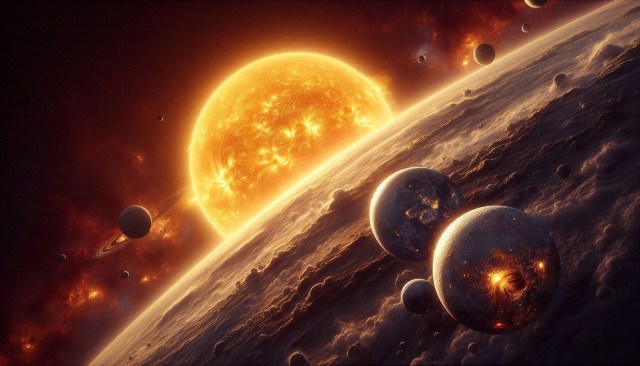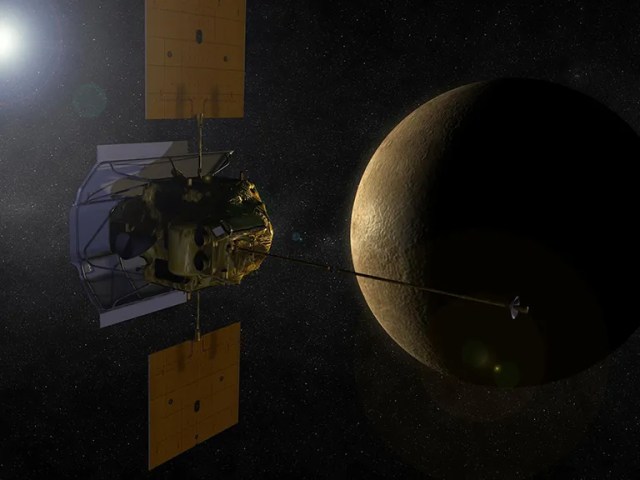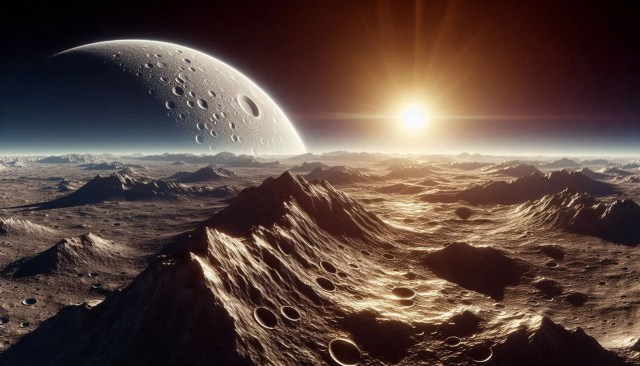12 Facts About Mercury: The Mysterious Planet Closest to the Sun

Mercury is the innermost and smallest planet in our solar system. It is also the closest planet to the sun and full of mystery. Our Interesting universe has many characteristics that make it a fascinating subject for astronomers. Today, we have some fascinating facts about Mercury that highlight its specialty.
1. Mercury is the Closest Planet to the Red Giant.
Mercury is an average of 58 million kilometers (36 million miles) from the Sun. That’s why Mercury has some unique properties, like extreme temperature variation. Mercury is also the most difficult object to observe from Earth, as it is often lost in the Sun’s glare.

2. Mercury Has No Atmosphere
Sound interesting Facts About Mercury has an extremely thin exosphere composed of atoms blasted off its surface by solar winds. Its exosphere is made up of Oxygen, sodium, hydrogen, helium, and potassium. Mercury’s temperature can change anytime in the day and night because there is no temperature to retain heat.
3. Temperature Extremes are a Defining Feature
We already told you that Mercury has extreme temperature changes in the solar system. During the daytime, Mercury’s surface temperature can heat up to 427 degrees Celsius (800 degrees Fahrenheit) the other hand, At night it can low as -180 degrees Celsius (-290 degrees Fahrenheit) it’s too Cold. These variations are due to the lack of atmosphere to distribute heat equally across the planet.
4. A Year on Mercury is Just 88 Earth Days
Mercury rounds around the sun fastest round nearly 29 miles (47 kilometers) per second than other planets, Mercury completes its orbit round in just 88 Earth days. Mercury got its name from the Roman God Who was known for its speed. However, in its fast orbit A day on Mercury is much longer than its years that is (One full rotation) and lasts about 59 Earth days.

5. Mercury Has a Large Iron Core
Mercury has one of the Largest amounts of Iron core, which is 85% of a plant’s radius, This massive core makes mercury’s strong magnetic field, although it’s only about 1% of Earth’s magnetic field.
We hope you are enjoying Interesting Facts About Mercury keep reading to know more about
Also read: 50 Facts About the Sun That Will Heat Your Mind
6. Mercury’s Surface Resembles Our Moon
Mercury exactly looks like Earth’s moon and its surface is heavily cratered. Mercury’s surface is covered with terrains, craters, and ridges which are impacts from space debris and formed by ancient volcanic activity. Caloris Basin is one of the most notable features, A massive crater impact on Mercury is about 1550 kilometers (960 miles) in diameter.

7. Mercury’s Orbit is Highly Eccentric
Mercury’s orbit is highly elliptical or oval-shaped it’s not a perfect circle as we think it’s different this means its distance from the sun significantly changes according to its orbit rotation. Its closest distance is 29 million miles (47 million kilometers) and its longest distance is 43 million miles (70 million kilometers) from the sun to its Orbit.
8. Mercury Has Water Ice in Its Polar Craters
As we know Mercury is the closest planet to the sun but Mercury’s nearest craters shadowed permanently ice water harbors on its poles. It happens because these regions are never in contact with direct sunlight making the ice always remain frozen. All this was discovered by NASA on the MESSENGER Mission and still scientists and prompted further study of Mercury’s polar regions.
9. Mercury Has Been Visited by Only Two Spacecraft
All the information about Mercury is given by only two missions. The first was NASA’s Mariner 10 between 1974 and 1975, Mariner 10 rounded around the planet three times and the Second mission was the MESSENGER mission as we discussed above this mission was launched between 2011 and 2015 these missions gave enough information about the planet’s Geology, magnetic field and it’s composition.

Image credit to NASA
10. Mercury May Shrink Over Time
Mercury has a huge amount of iron core which means as temperature iron contracts and expands that’s why mercury slowly shrinks as its iron core cools and contracts. The result creates scraps and cliffs on the mercury surface. Some of the cliffs are hundreds of miles long and over a mile high. This kind of reaction shows that mercury is still active geologically on a small scale.
Also Read: 15 Facts About Moon Has The Answer To Everything.
11. Mercury’s Past Could Hold Clues to the Early Solar System
Mercury has a heavily cratered surface and its ancient geological features make it a time capsule of the early solar system. Scientists try to deep study to gain insight into the processes that shaped the formation of the solar system. Mercury also helps to know more about heavy bombardment by asteroids and comets in the early history of planetary bodies.
12. Interesting Facts About Mercury Sky is Perpetually Black
As we know mercury has no atmosphere that’s why Mercury’s sky appears black even at noon because light can travel through the atmosphere. This mean if you are on Mercury and see the sun it is bright and looks like a glaring disk against the dark and starry background of entire space even at high noon

Conclusion
Mercury is the Smallest planet in our solar system but it is full of surprises. Its rapid orbit rotation to its extreme temperature changes and fascinating geological features. The celestial bodies of Mercury are reminding of the Complexity and diversity in our solar system. Scientists are trying to study this mysterious planet they think who knows what other secrets will reveal by the time.


 10 Fascinating Facts About Jupiter: The Giant of Our Solar System
10 Fascinating Facts About Jupiter: The Giant of Our Solar System  20 Amazing Facts About Venus: Hottest Planet in Our Solar System
20 Amazing Facts About Venus: Hottest Planet in Our Solar System  50 Facts About the Sun That Will Heat Your Mind
50 Facts About the Sun That Will Heat Your Mind  30 Facts About Earth For Knowledge And Fun
30 Facts About Earth For Knowledge And Fun  20 Facts About The Taj Mahal “A Monument to Love, Art, & History”
20 Facts About The Taj Mahal “A Monument to Love, Art, & History”  Top 30 Facts About Famous Inventions and Their Creators: The Minds Behind Modern Marvels
Top 30 Facts About Famous Inventions and Their Creators: The Minds Behind Modern Marvels  15 Merry Facts About Christmas Day:- Facts Behind Christmas Day
15 Merry Facts About Christmas Day:- Facts Behind Christmas Day